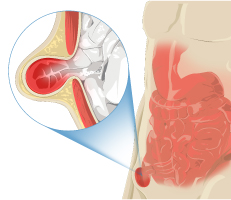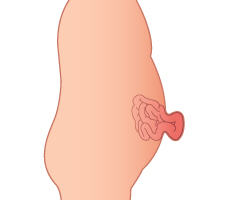
laparoscopy and laser Centre

laparoscopy and laser Centre
A hernia occurs when an internal organ or other body part protrudes through the wall of muscle or tissue that normally contains it. Most hernias occur within the abdominal cavity, between the chest and the hips. Types of herina are Umbilical hernia, Para umbilical hernia, Inguinal Hernia and Incisional hernia.
Inguinal hernia's occur when a part or whole of the abdominal contents omentum or intestine protrudes through a weak spot in the anterior abdominal wall – inguinal canal

An umbilical hernia is a bulge in bellybutton (navel) which occurs due to a defect in umbilicus through which intestine or omentumprotrudes. Umbilical hernias are common and typically harmless.
Umbilical hernias are most common in infants, but they can affect adults as well. In an infant, an umbilical hernia may be especially evident when the infant cries, causing the bellybutton to protrude. This is a classic sign of an umbilical hernia

An umbilical hernia is a soft swelling or bulge in the navel. In babies with umbilical hernia, the bulge may be visible only cry, cough or strain.
Umbilical hernias that appear during adulthood may have symptoms .
An umbilical hernia is diagnosed during a physical exam. Imaging studies — such as an abdominal ultrasound or a CT scan — are used to screen for complications.
Most umbilical hernias in babies close on their own by age 1 or 2. For child, surgery is typically reserved for umbilical hernias that:
For adults, surgery is typically recommended to avoid possible complications, especially if the umbilical hernia gets bigger or becomes painful.
This procedure is done with local anaesthesia /spinal anaesthesia or general anaesthesia, the surgeon makes an incision below umbilicus and pushes the protruding contents back into abdomen. Then the weakened area is often reinforced with a synthetic mesh .The opening is then closed with stitches, staples or surgical glue.
This procedure requiring general anaesthesia, the surgeon makes small incisions to get in to your abdomen. Gas is used to inflate your abdomen to make the internal organs easier to see. After reducing the herniated contents mesh is placed &anchored to anterior abdominal wall. Advantages are less discomfort and scarring after surgery and a quicker return to normal activities.